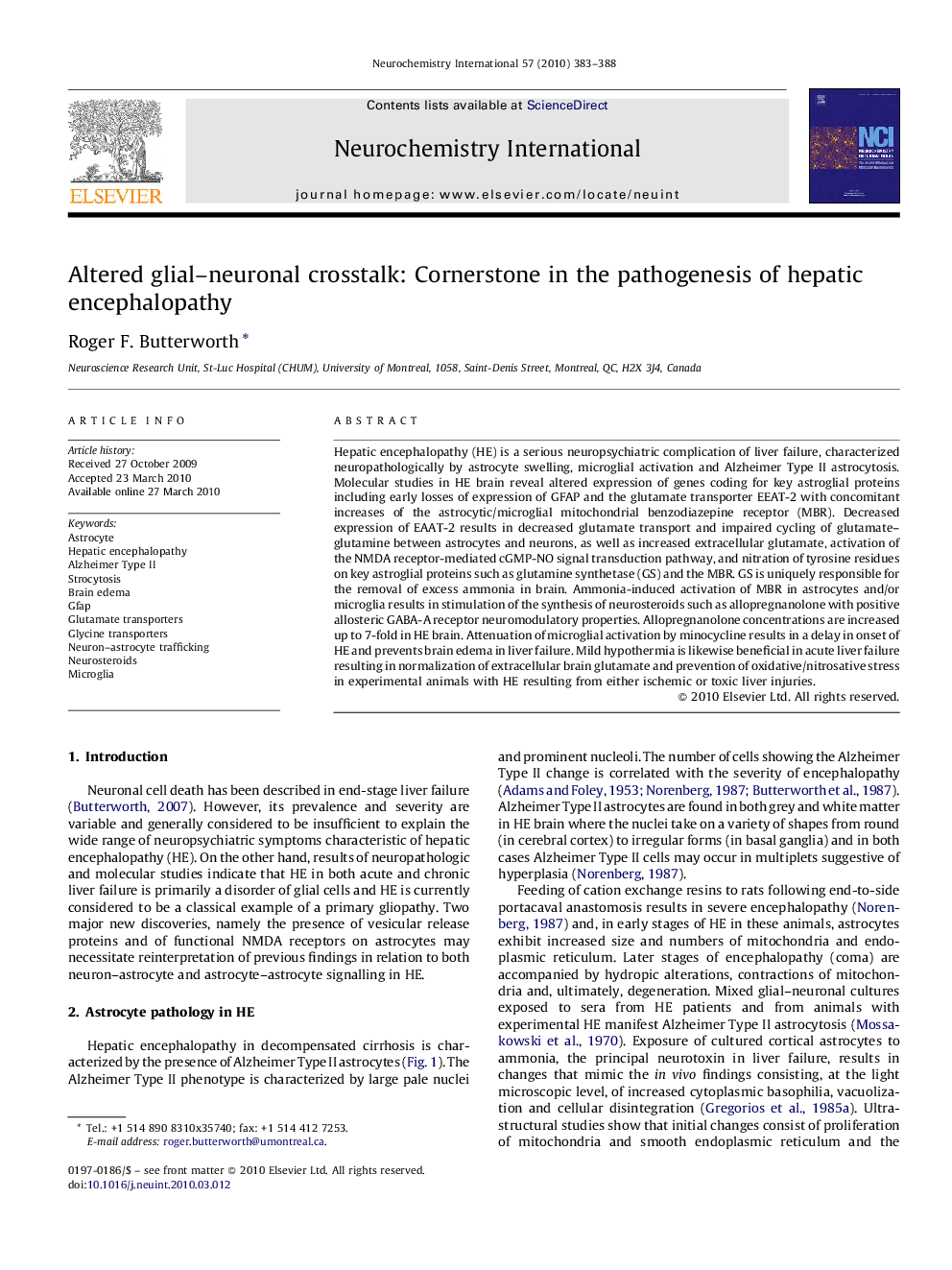| Article ID | Journal | Published Year | Pages | File Type |
|---|---|---|---|---|
| 2201231 | Neurochemistry International | 2010 | 6 Pages |
Hepatic encephalopathy (HE) is a serious neuropsychiatric complication of liver failure, characterized neuropathologically by astrocyte swelling, microglial activation and Alzheimer Type II astrocytosis. Molecular studies in HE brain reveal altered expression of genes coding for key astroglial proteins including early losses of expression of GFAP and the glutamate transporter EEAT-2 with concomitant increases of the astrocytic/microglial mitochondrial benzodiazepine receptor (MBR). Decreased expression of EAAT-2 results in decreased glutamate transport and impaired cycling of glutamate–glutamine between astrocytes and neurons, as well as increased extracellular glutamate, activation of the NMDA receptor-mediated cGMP-NO signal transduction pathway, and nitration of tyrosine residues on key astroglial proteins such as glutamine synthetase (GS) and the MBR. GS is uniquely responsible for the removal of excess ammonia in brain. Ammonia-induced activation of MBR in astrocytes and/or microglia results in stimulation of the synthesis of neurosteroids such as allopregnanolone with positive allosteric GABA-A receptor neuromodulatory properties. Allopregnanolone concentrations are increased up to 7-fold in HE brain. Attenuation of microglial activation by minocycline results in a delay in onset of HE and prevents brain edema in liver failure. Mild hypothermia is likewise beneficial in acute liver failure resulting in normalization of extracellular brain glutamate and prevention of oxidative/nitrosative stress in experimental animals with HE resulting from either ischemic or toxic liver injuries.
